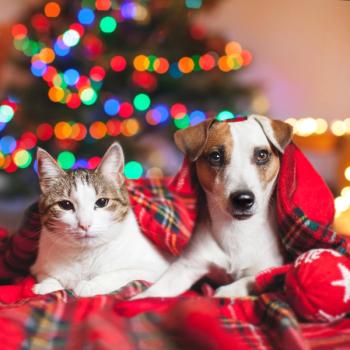
Veterinarians, students destitute in Grenada
Grenada, West Indies-Weeks after Hurricane Ivan devastated Grenada, practitioners and students at St. George's University's veterinary school report a dwindling water supply, no electricity and desperate attempts by locals to obtain food and medical care.
Grenada, West Indies—Weeks after Hurricane Ivan devastated Grenada, practitioners and students at St. George's University's veterinary school report a dwindling water supply, no electricity and desperate attempts by locals to obtain food and medical care.
Flooding and 160-mph winds from the Sept. 7 storm contributed to 39 deaths and flattened 90 percent of homes and businesses on the Eastern Caribbean island. While the university's campus largely remained intact, the veterinary teaching hospital and its equipment were destroyed. At presstime, most of the university's 350 veterinary students had fled the island for the United States, planning to resume classes among the nation's 28 accredited veterinary institutions.
Students who waited out the storm describe experiencing the Category 5 hurricane as "surreal."
"It was like a really bad horror movie," says Kim Barlowe, 29, who waited out the storm with classmates in her apartment complex. "I watched with a flashlight as the ceiling started buckling, and water was coming through the cracks in the walls. The wood pulled off the windows. We were very lucky. Some of our friends up on campus, they lost everything."
Caught off guard
Because Grenada sits below the hurricane belt, officials did not initiate an evacuation before the storm's arrival. In Ivan's aftermath, university officials have directed displaced veterinary students to resume schedules at three affiliated veterinary colleges: North Carolina State University, Purdue University and Kansas State University (KSU).
Barlowe and her classmate Janice Huang, 33, remained on the island to aid locals and animals before heading for Purdue.
"There's a lot of shock," Huang says. "Homes are destroyed, roofs gone. These are not affluent people to begin with. They live in one bedroom homes, and there was not one of those homes that did not suffer."
Joining Barlowe and Huang's cleanup efforts was Dr. Marta Lanza-Perea, a St. George's veterinary medical professor who remained on the island until her Oct. 24 move to KSU.
At presstime, Lanza-Perea was forming a mobile medical unit to attend to residents and animals.
"All the roads are blocked because there are so many trees down," she says. "I know people in the middle of the island don't have food or water, and they're desperate."
With the teaching hospital and local medical facilities destroyed, Perea's abilities were limited.
"We don't have an X-ray machine working anymore," she says. "I've amputated a few limbs on animals, stitched up cats, and there are dog wounds big time. With no fences on properties, animals are fighting more. Wounds from the hurricane are now septic and full of maggots, and I'm sure we still have a lot to see."
Costly cleanup
While the university's campus sustained relatively little damage, the teaching hospital, located 15 miles away, will cost millions to renovate, officials say.
University leaders estimate costs of transferring the St. George's veterinary and medical students to U.S. institutions in the $3 million to $5 million range. The hospital, which lost its roof and most of its equipment, is up and running on a limited basis as an emergency clinic, now located in the veterinary school's anatomy lab.
Relief efforts
Animal health companies and practitioners have aided in the school's relief efforts, but university officials seek manpower and additional donations. The following list of items, including monetary assistance, can be sent to WINDREF/SGU Relief Fund for Grenada, One East Main Street, Bay Shore, N.Y. 11706:
- Non-perishable foods;
- Clothing, basic toiletries, cots, bedding, blankets;
- Emergency shelters, tents, tarpaulins, ropes, duct tape, generators, power tools, chain saws, flashlights and battery operated radios, all types of batteries;
- Communication equipment — two-way radios, satellite and GSM/TDMA cell phones;
- Water and chlorine tablets (not in liquid form);
- Emergency first aid kits;
- Medications: Tetanus toxoid and human rabies vaccine are critical; antibiotics (IV, oral and topical), antiseptic creams, lidocaine, analgesics, anti-diarrheal, anti-emetics, vermox, steroids, cardiac, antihypertensive and diabetic medications;
- Surgical equipment: dressings, undercast padding, tape, attire, masks, sutures, gloves;
- Needles, syringes, IV fluids, IV cannulas, tubing, Heplocks, sterile water for injection, sterile water for irrigation.
All packages must include the name, address and phone number of the donor, as well as a detailed list of its contents.
Newsletter
From exam room tips to practice management insights, get trusted veterinary news delivered straight to your inbox—subscribe to dvm360.






